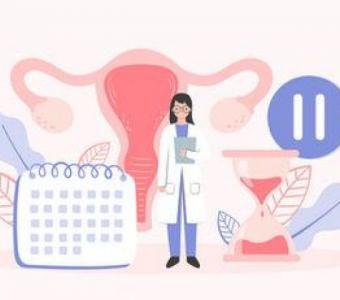How to Avoid Allergies and Happily Pet Cats
11967.00 United States Dollar - $
Published date: 2024/11/08
Modified date: 2024/11/08
- Location: New York, New York, New York, United States of America
The cat allergy is arguably the saddest development for cat lovers. The moment you come in contact with the cat, you start to sneeze, experience runny nose, itchy eyes, skin rashes, and even have asthma problems.
Cat allergies affect one in ten people, which is a significant number. Cat allergies affect as much as 30% of the population in some places.
Many people who claim to be cat slaves insist on owning cats while suffering from allergies. Some people, on the other hand, are forced to euthanize their cats because they or members of their family suffer from severe allergies. It hurts in both cases.
Contrary to popular belief, cat fur is not the problem. The primary allergen is a protein called Fel d 1 that is released by the sebaceous and salivary glands of cats. This protein, which cats lick all over their bodies, adheres to carpets, curtains, bed sheets, people's hair, and clothing, and is released into the air through dander and hair. Even after a thorough cleanup, felt d 1 is challenging to get rid of due of its extreme stickiness. Most people can benefit from finding an anti-allergic treatment that targets Fel d 1.
Through immune control mechanisms, allergen-specific immunotherapy (AIT), a treatment that promotes tolerance, alters the course of allergic disorders.
Recently, researchers from the Luxembourg Institute of Health explained in an article published in the journal Allergy under the title "Comprehensive mapping of immune tolerance yields a regulatory TNF receptor 2 signature in a murine model of successful Fel d 1-specific immunotherapy using high-dose" that high-dose specific adjuvant molecules CpG oligonucleotides can modify the immune system's allergic response to the major cat allergen Fel d 1, thereby promoting human tolerance.
The ability of humans to endure the highest CpG dose in endotoxin-free conditions was assessed after researchers built a BALB/c OlaHsd mice efficacy model allergic to Fel d 1 in order to study the clinical effect of high-dose CpG adjuvant AIT. It was discovered that the allergic mice treated with AIT showed lower IgE levels and higher IgA and IgG (anti-inflammatory effects), and the lung function and respiratory tract inflammation were obviously improved. This was done by detecting the Fel d 1 specific antibodies in the serum of the mice.
The levels of pro-allergic cytokines in mice treated with AIT were found to be lower than those in untreated allergic mice when the researchers looked further into the cytokines in mouse bronchoalveolar lavage fluid (BALF). This demonstrates how AIT can lessen bronchial hyperresponsiveness and airway inflammation in a preclinical setting.
The researchers also observed that a significant number of immune cells involved in allergy regulation and tolerance, such as regulatory T cells (T-regs), regulatory B cells (B-regs), natural killer cells (NKs), plasmacytoid dendritic cells (pDC), and regulatory T cells (T-regs), expressed high levels of tumor necrosis factor (TNF-), tumor necrosis factor receptor (TNFR-2), and act as a "brake" on the immune system.
The researchers also discovered that AIT activates a novel Treg dubbed biTreg, which can balance effector cells' responses to antigens. This underlines the anti-allergic impact of AIT and the reversibility of allergic features.
In order to translate these findings into clinical practice, scientists have created a subcutaneous (sc) injection medication delivery technique that is more efficient than conventional intraperitoneal (IP) injection at reducing the amount of airway eosinophils and inhibiting the Th2 immune response.
The researchers created a medically acceptable mode of delivery and optimized the ATI specific therapy for cat allergy based on the highest CpG dose that humans could take, setting the groundwork for the creation of novel allergic immunotherapy.
In addition to AIT, researchers are still developing alternative strategies.
1. Vaccinate cats to stop them from developing fel d 1.
2. Through the cat food, the antibodies that neutralize allergens are immediately injected into the cat's body.
Cat allergies affect one in ten people, which is a significant number. Cat allergies affect as much as 30% of the population in some places.
Many people who claim to be cat slaves insist on owning cats while suffering from allergies. Some people, on the other hand, are forced to euthanize their cats because they or members of their family suffer from severe allergies. It hurts in both cases.
Contrary to popular belief, cat fur is not the problem. The primary allergen is a protein called Fel d 1 that is released by the sebaceous and salivary glands of cats. This protein, which cats lick all over their bodies, adheres to carpets, curtains, bed sheets, people's hair, and clothing, and is released into the air through dander and hair. Even after a thorough cleanup, felt d 1 is challenging to get rid of due of its extreme stickiness. Most people can benefit from finding an anti-allergic treatment that targets Fel d 1.
Through immune control mechanisms, allergen-specific immunotherapy (AIT), a treatment that promotes tolerance, alters the course of allergic disorders.
Recently, researchers from the Luxembourg Institute of Health explained in an article published in the journal Allergy under the title "Comprehensive mapping of immune tolerance yields a regulatory TNF receptor 2 signature in a murine model of successful Fel d 1-specific immunotherapy using high-dose" that high-dose specific adjuvant molecules CpG oligonucleotides can modify the immune system's allergic response to the major cat allergen Fel d 1, thereby promoting human tolerance.
The ability of humans to endure the highest CpG dose in endotoxin-free conditions was assessed after researchers built a BALB/c OlaHsd mice efficacy model allergic to Fel d 1 in order to study the clinical effect of high-dose CpG adjuvant AIT. It was discovered that the allergic mice treated with AIT showed lower IgE levels and higher IgA and IgG (anti-inflammatory effects), and the lung function and respiratory tract inflammation were obviously improved. This was done by detecting the Fel d 1 specific antibodies in the serum of the mice.
The levels of pro-allergic cytokines in mice treated with AIT were found to be lower than those in untreated allergic mice when the researchers looked further into the cytokines in mouse bronchoalveolar lavage fluid (BALF). This demonstrates how AIT can lessen bronchial hyperresponsiveness and airway inflammation in a preclinical setting.
The researchers also observed that a significant number of immune cells involved in allergy regulation and tolerance, such as regulatory T cells (T-regs), regulatory B cells (B-regs), natural killer cells (NKs), plasmacytoid dendritic cells (pDC), and regulatory T cells (T-regs), expressed high levels of tumor necrosis factor (TNF-), tumor necrosis factor receptor (TNFR-2), and act as a "brake" on the immune system.
The researchers also discovered that AIT activates a novel Treg dubbed biTreg, which can balance effector cells' responses to antigens. This underlines the anti-allergic impact of AIT and the reversibility of allergic features.
In order to translate these findings into clinical practice, scientists have created a subcutaneous (sc) injection medication delivery technique that is more efficient than conventional intraperitoneal (IP) injection at reducing the amount of airway eosinophils and inhibiting the Th2 immune response.
The researchers created a medically acceptable mode of delivery and optimized the ATI specific therapy for cat allergy based on the highest CpG dose that humans could take, setting the groundwork for the creation of novel allergic immunotherapy.
In addition to AIT, researchers are still developing alternative strategies.
1. Vaccinate cats to stop them from developing fel d 1.
2. Through the cat food, the antibodies that neutralize allergens are immediately injected into the cat's body.
Related listings
-
 ivf clinic in BhubaneswarCheck with sellerHealthcare Bhubaneswar 2024/11/06Discover hope and expertise at our IVF clinic in Bhubaneswar. With state-of-the-art facilities and compassionate care, we specialize in fertility treatments to help you realize your dream of parenthood. Book a consultation today and take the first st...
ivf clinic in BhubaneswarCheck with sellerHealthcare Bhubaneswar 2024/11/06Discover hope and expertise at our IVF clinic in Bhubaneswar. With state-of-the-art facilities and compassionate care, we specialize in fertility treatments to help you realize your dream of parenthood. Book a consultation today and take the first st...Clicks 6 | 1 day ago
-
 Ananthapuri Hospitals-Best Gynecologist in TrivandrumFreeHealthcare Thiruvananthapuram (Kerala) 2024/10/26Ananthapuri Hospitals and Research Institute (AHRI) is renowned for providing exceptional healthcare services, including being the best gynecology hospital in Trivandrum. Strategically located near the Thiruvananthapuram Railway Station and Airport, ...
Ananthapuri Hospitals-Best Gynecologist in TrivandrumFreeHealthcare Thiruvananthapuram (Kerala) 2024/10/26Ananthapuri Hospitals and Research Institute (AHRI) is renowned for providing exceptional healthcare services, including being the best gynecology hospital in Trivandrum. Strategically located near the Thiruvananthapuram Railway Station and Airport, ...Clicks 3 | 1 week ago
-
 Custom food boxesCheck with sellerHealthcare Ontario 2024/10/25Discover the perfect solution for food lovers with our custom food boxes! Tailor your selection to include gourmet snacks, meal kits, or unique treats, all packaged to delight. Perfect for gifts or personal indulgence, our customizable options ensure...
Custom food boxesCheck with sellerHealthcare Ontario 2024/10/25Discover the perfect solution for food lovers with our custom food boxes! Tailor your selection to include gourmet snacks, meal kits, or unique treats, all packaged to delight. Perfect for gifts or personal indulgence, our customizable options ensure...Clicks 4 | 2 weeks ago



